Do I need to buy winter tires or can I just get snow chains?
What the heck is siping?
When do I have to have studded tires and when will studless do?
If you’re wondering how to pick the right tires for winter, or whether you need them at all, here are answers to the eight most common questions about winter tires.
(A lot of people still call tires used in the cold months “snow tires,” but it’s more accurate to call them “winter tires.” For purposes of this article, we use both terms to mean tires designed for winter driving.)
Winter tires are important for safe driving if you live somewhere that gets snow, ice, sleet or freezing rain and temperatures of 40 degrees or colder. They’re also the right option if you routinely make trips through snow zones or the mountains during the cold months.
Learn about the difference between all-season tires and snow/winter tires here.
Some all-season tires have an M+S rating. This stands for mud and snow. These tires have a more aggressive tread design to deliver better traction in a variety of conditions using larger tread blocks and wider gaps between them. The purpose of these tires is to achieve optimal tire life along with good performance in most weather conditions.
But it doesn’t mean they’re adequate for winter driving. In slick conditions, they don’t deliver the traction, control and short stopping distance that you get from a snow tire.
If you want safer driving on packed snow or ice, look for tires made with the right compound and branded with the Mountain Snowflake. This means they’ve actually been tested and certified to perform in winter conditions.
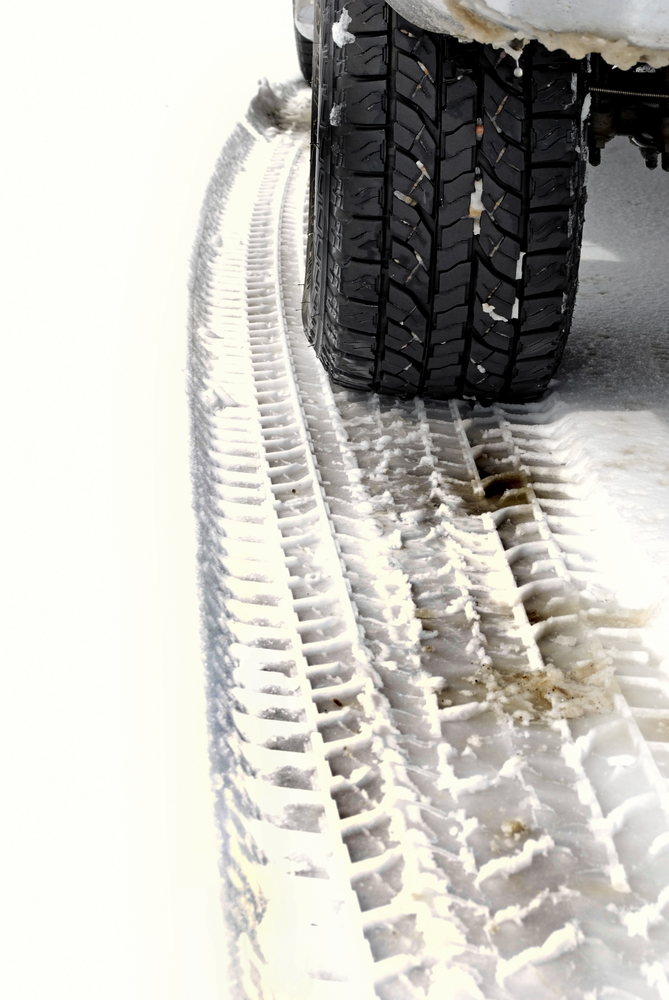 “I have all-season tires, so I don’t need snow tires. Right?”
“I have all-season tires, so I don’t need snow tires. Right?”Wrong. Don’t believe it? See this driving comparison between all-season and snow tires.
If you’re driving on snowy or icy roads, only winter tires will give you good stopping ability and secure handling. This is because they’re built very differently. How?
Different compound. Summer and all-season tires are made with a stiffer rubber compound. This helps the tire retain its shape when it’s rolling on hot pavement. Winter tires are made with hydrophilic (that’s “water-loving”) rubber which stays softer and more pliable in winter weather. This more flexible rubber is one reason you get more traction on snow and ice.
Another reason is tread design. Winter tires have a higher “void-to-lug” ratio, meaning there are larger grooves between the blocks of tread (the lugs). The tread blocks also have irregular, sharp edges.
When a tire with wide grooves and biting edges travels over packed snow, it cuts through and scoops some of the snow into the voids on the tire surface, allowing the tread to stay in closer contact with the road.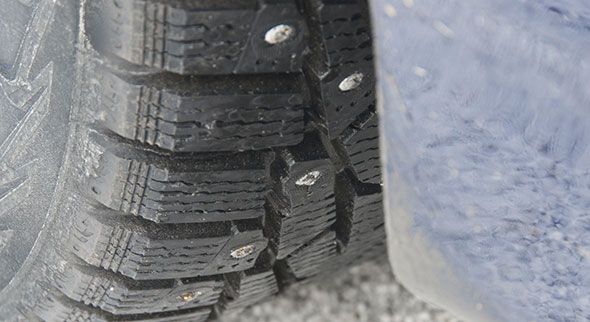 Then the velocity of the tire ejects this snow from the grooves. This is how winter tires provide more aggressive traction than all-season tires.
Then the velocity of the tire ejects this snow from the grooves. This is how winter tires provide more aggressive traction than all-season tires.
Most snow tires are already siped, with small patterned slits on the lugs that create extra edges for better road grip. Additional safety siping can be done for a fee on new or used tires. If you’re regularly traveling on slick roads, the added traction from custom siping is a good way to improve starting, stopping and rolling traction.
Before you jump on that set of “lightly used” winter tires on Craigslist, do three quick checks. First, verify they’re the right size. You can look in your vehicle owner’s manual or right on your existing tires’ sidewall close to the rim for the series of numbers. (Here’s a primer on what they all mean.) If you’re not sure the tires you’re considering are the correct size, call a tire dealer and make sure.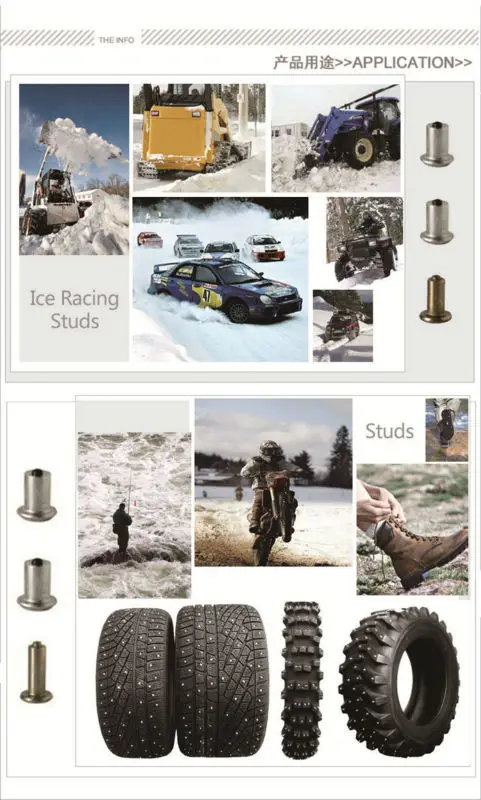
Second, measure the tread depth by using a tire tread depth gauge. You can pick one up at any auto parts store for under five bucks. Or have a tire store tech do it; it should be free. Take measurements in multiple places in the grooves on each tire.
A new tire typically has 11/32nds of an inch in tread depth. A rule of thumb is that if there are 6/32nds of an inch or less in tread remaining on a winter tire, it’s about to lose a good deal of snow performance. So think carefully about whether you’re going to get what you’re paying for.
Third, be sure there’s not a problem with uneven wear. Did your tread gauge measurements show any tread depth difference between the four tires? It’s really common for tires to wear differently over time. If the disparity between any two tires is more than 3/32nds of an inch, pass on those used tires. Driving with mismatched tires or putting the wrong size on your vehicle will NOT save you money in the long run. You’re risking big repair bills for your transmission.
It’s also a bad idea to put winter tires on only the front or back. This creates a big difference in traction between your axles. And this will mean less steering control, not more.
Tire chains can be important — and are sometimes required — for traction when you’re traveling in the mountains or on icy roads. But they’re not made for driving at highway speed or on bare pavement. You risk damaging your chains if you try this.
Don’t think of chains as a substitute for winter tires but as an option you need to have ready when you’re driving on snow.
Depending on the conditions and your state’s rules, traction controls in snowy areas will range from requiring only the minimum — like M+S tires on the drive axle — up to chains on all tires, including all-wheel and four-wheel drive vehicles. Here are California’s chain controls, for example.
The tire dealer will consider your driving habits, where you’re traveling and typical winter conditions in your area when recommending what you need.
Studless snow tires work well on slush and packed snow. They get traction through wide, deep grooves and lots of irregular surfaces with sharp edges. This allows the rubber to cut through snow and grip the road.
Studded tires provide the best traction you can get, even when you're encountering ice or packed snow. Studs are lightweight, small metal spikes that are staggered across the tread. They help break through packed snow and ice-covered roads to give you better traction. Note: Extra tread depth is needed to accommodate studs, so studded tire size options are limited. Also, the times of year when studded tires are allowed on the road vary by state. Here’s a guide to studded tire regulations.
It’s a question of time and money. Here’s a way to decide:
 (Les Schwab will swap out tires purchased at our stores at no charge if they’re mounted on separate wheels.)
(Les Schwab will swap out tires purchased at our stores at no charge if they’re mounted on separate wheels.)Also consider the extra wear and tear on your tires that comes with unmounting and remounting tires on only one set of wheels. Especially with low-profile tires, it’s not uncommon for an inexperienced tire tech to damage the inside edge of a tire near the beads, the places where the tire gets pried off and pushed back on.
If you’re leaning toward separate wheels for your winter tires, here are some tips on selecting the best wheel finishes for winter conditions.
Check out tests from the Tire Industry Association in this video to see what the difference winter tires can make.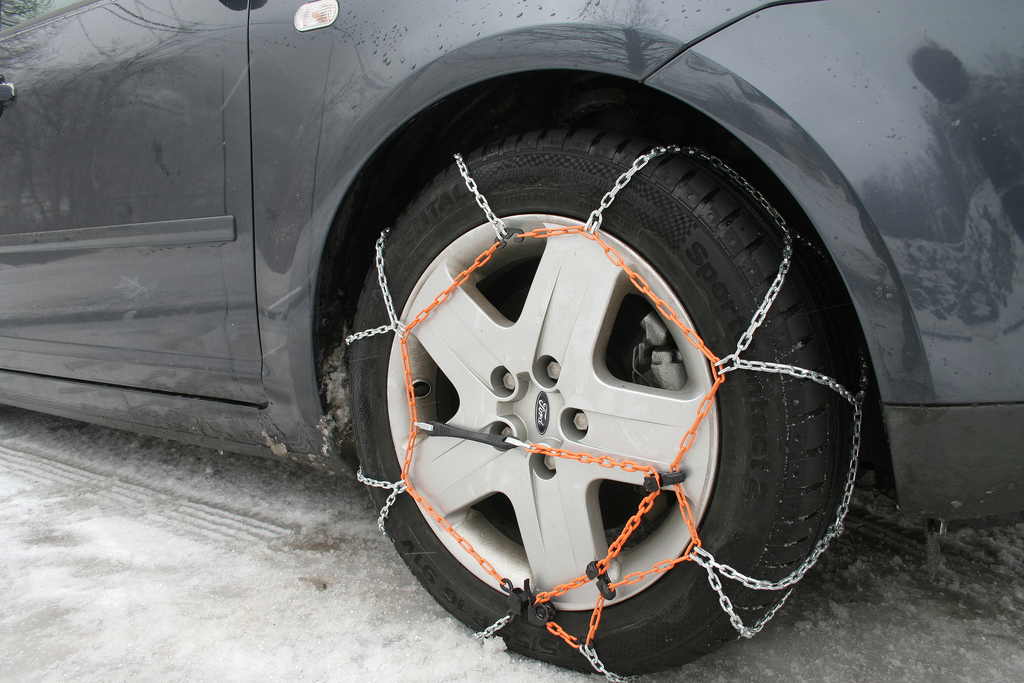
Some all-season tires are marketed as working equally well in summer and winter. That may be true in dry, mild climates where the seasons don’t vary much. But you’ll only get confident traction, braking and control on snow and ice with a winter tire. If you live in a place with winter weather, you’ll need tires marked with the Three-Peak Mountain Snowflake for safest handling. Because not all tires with a mountain snowflake have a winter compound, ask your tire dealer what you really need.
Want more tips on winter road safety? See 19 Winter Driving Resources You Can’t Do Without.
SHOP WINTER TIRES
Here's an all-too familiar winter driving scene: the roads are dusted with slippery, powdery snow and the all-season tires that came with your car seem to be getting the job done. Until your back wheels start to fishtail. Or you brake for a traffic light -- and your car keeps rolling (skating?) toward that icy intersection for several more seconds.
Until your back wheels start to fishtail. Or you brake for a traffic light -- and your car keeps rolling (skating?) toward that icy intersection for several more seconds.
Opt out of those nerve-wracking moments this winter. Get snow tires. Get your brakes, your traction (and your confidence) back.
Snow tires (also called winter tires) provide better traction and braking on winter roads compared to all-season tires, summer tires, or performance tires. The main advantages of snow tires come from cold-friendly rubber composition and precipitation-friendly tread design:
Deeper Tread Depth: Snow tire treads can grip though surface snow and slush.
Groovy Tread Patterns: Snow tire tread patterns have more grooves, to increase the surface area for traction.
Wider Siping: Snow tire edges often feature more open channels called siping to evacuate water.
Softer Rubber: Snow tire rubber is formulated to stay flexible in temperatures below 45 °F / 7 °C (where other tires may develop cracks and premature wear).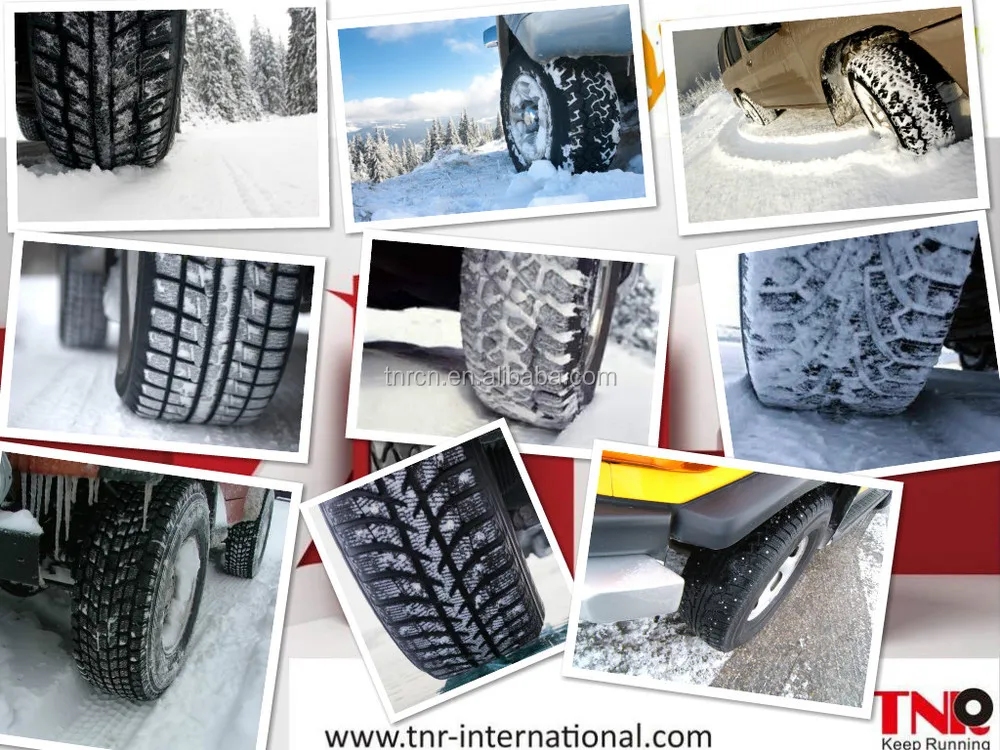
Winter tires come in studded and studless types. (Technically, studdable tires are also on the market -- with holes in the tread to install your own studs.) Studded tires offer extreme traction, but give you a bumpy ride the rest of the time. Plus, studded tires damage roads. They’re only legal during winter in most of Canada and the U.S. -- and banned outright in some states. Studded snow tires were once the state of the art in snow tire design and many of us grew up with them. Studless snow tires are the standard winter tire choice today, thanks to decades of advances in tread design and rubber formulation.
All-season tires are not a substitute for snow tires. They’re designed to be a compromise between winter traction and warm-weather performance, comfort, and fuel efficiency. Both summer tires and winter tires outperform all-season tires in their areas of strength.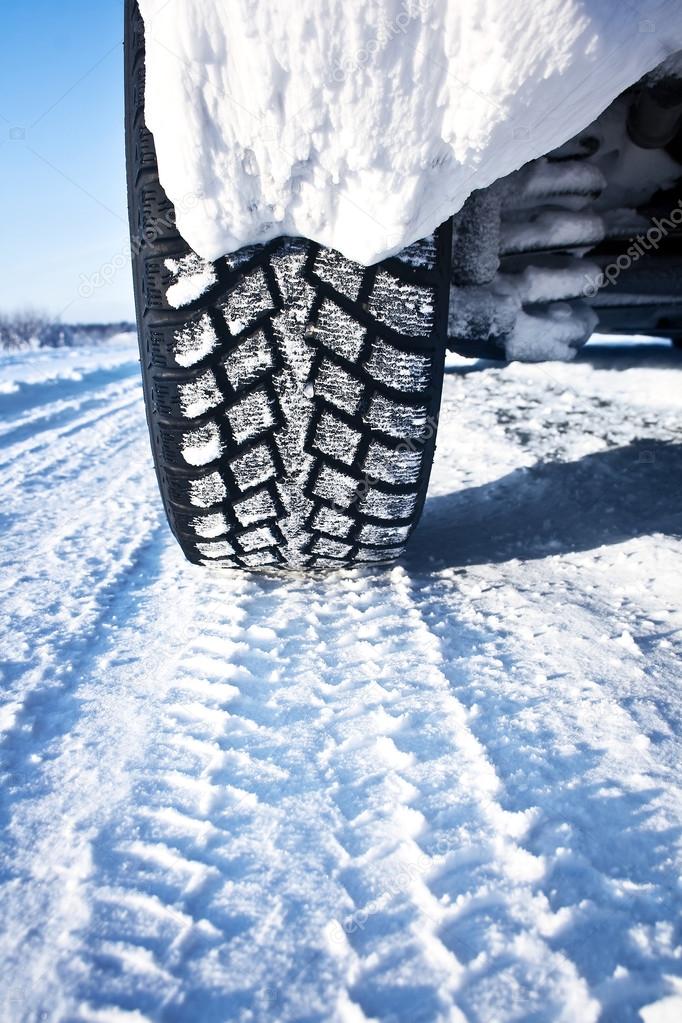 And depending on where you drive, snow tires may be a requirement:
And depending on where you drive, snow tires may be a requirement:
Vehicles registered in the province of Quebec must have four snow tires from December 1 to March 15 -- and they must be either studded or marked with the three-peak mountain snowflake (3PMSF) symbol. (Learn about 3PMSF tires.)
In several U.S. states, local officials have the power to mandate snow tires (or chains) during harsh weather or on snowy roads. New to an area with serious winters? Check with your state transportation department -- or your local Midas tire expert -- for current tire laws.
More and more off-road and all-terrain tires bear the 3PMSF “mountain snowflake” symbol indicating that they are snow-rated, but these tires aren’t a substitute for snow tires. They’re designed to include snow in the types of terrain they can handle, but most aren’t made of cold-tolerant rubber and they aren’t optimized for the full range of winter challenges -- such as icy streets when you aren’t driving off-road.
Off-road driving can complicate your snow tire options. Trust Midas to help you find your perfect winter tires.
Related:
Learn more about all-terrain tires.
If winter temperatures in your area regularly drop below 45 °F / 7 °C, snow tires are well worth the extra expense - no matter how much (or how little) snow falls.
1. Snow tires offer better cold-weather traction whether it’s snowing or not, because they’re made of more cold-tolerant rubber than other tires. So “snow” tires offer peace of mind all winter -- even when there’s not a cloud in the sky.
2. Snow tire treads really do outperform all-season tires on snow and ice. In a test of multiple tire brands, Consumer Reports found that winter tires reduced braking distance on ice by an average of six feet, and improved snow traction by an average of 34%1.
Here’s another reason snow tires are worth the money: Keeping your regular tires off the road and safely stored during the winter months will extend their life for another two or three years.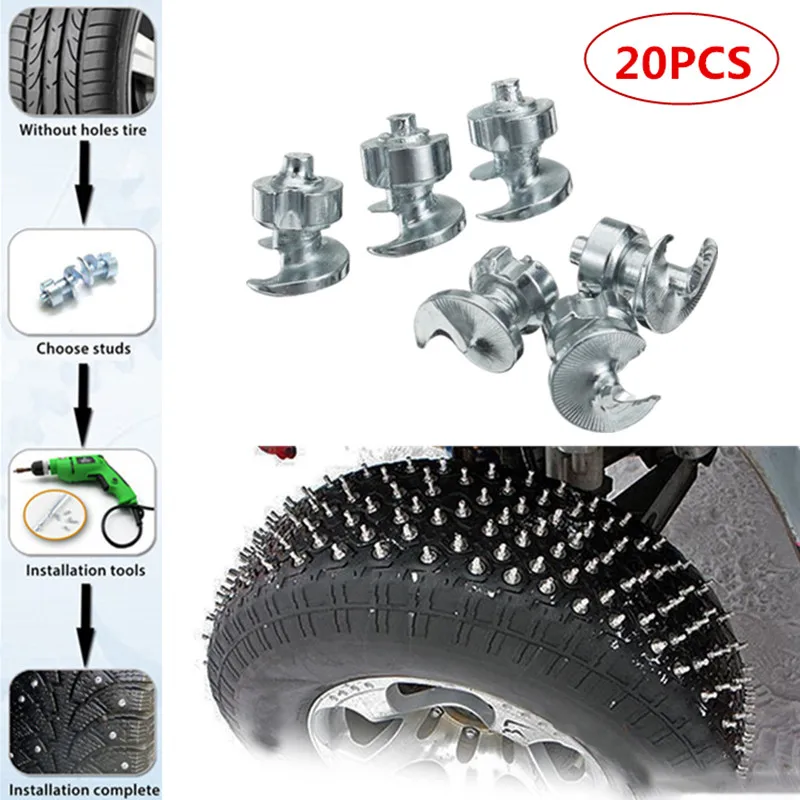
Four matching snow tires are recommended for all passenger vehicle types. Your vehicle’s brakes and traction control are designed for all its tires to have the same traction capability. If you only change your front tires to winter tires, the back of your vehicle may spin out as the back tires grip the road loosely compared to the front. If you only install winter tires on the back of your car, you may find it difficult to turn your vehicle as the front tires encounter resistance from the back tires.
Winter tires excel in temperatures below 45 °F / 7 °C, and summer tires rule the road in warmer weather. It’s not just about snow -- it’s the rubber, too. Summer tires can grow brittle in cold weather, risking premature cracks and wear. Winter tires can become too soft in warm weather, increasing rolling resistance, compromising fuel efficiency, and wearing down your tire edges prematurely.
Snow tires should not be used when the temperature regularly exceeds 45 °F / 7 °C. Snow tires are made of softer rubber than other tires to counteract the brittleness that rubber takes on when cold. A winter tire used in warm weather becomes too soft, causing uneven tread wear and risking premature breakdown. The tread wear pattern on a snow tire used out of season looks much like the wear pattern on an under-inflated tire.
Snow tires are made of softer rubber than other tires to counteract the brittleness that rubber takes on when cold. A winter tire used in warm weather becomes too soft, causing uneven tread wear and risking premature breakdown. The tread wear pattern on a snow tire used out of season looks much like the wear pattern on an under-inflated tire.
A set of snow tires that is properly used, maintained, and stored will provide most drivers with three to four seasons of superior winter traction. After that, the tires may be usable for several more winters, but without the full benefits of winter tires. Your tire manufacturer may offer guidelines, and the actual life of your snow tires will depend on your mileage, your driving conditions, and how you care for your tires. You can extend their life by using your winter tires in only cold weather, storing them properly in warm weather, maintaining proper tire pressure, and following a regular schedule of wheel alignment, tire rotation, and tire balancing.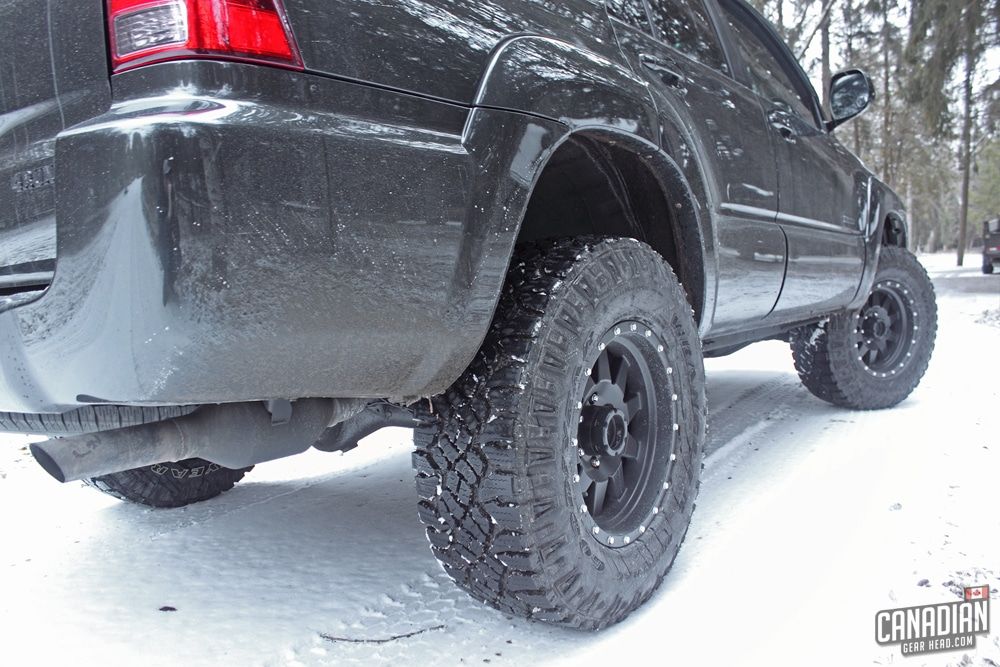
Replace your snow tires if they sustain sidewall damage, or when they’ve worn down below acceptable tread depth. In the U.S., 2/32” is the legal minimum tire tread depth, and some manufacturers encourage drivers to keep their tires until that point. (Tip: When your tire wear bars show visible wear, you’re there. Replace those tires as soon as possible.) But 4/32” to 6/32” may be a better tread depth for snow tires. In a test of multiple winter tire brands at 5/32”-6/32” tread depth, Consumer Reports saw a 14.5% decline in snow traction during acceleration, and a 7% increase in wet stopping distance2.
Related:
How to measure tire tread depth with a U.S. or Canadian coin.
Your local Midas technician can inspect your snow tires during the season switch, or whenever you have your tires serviced. You’ll get objective advice on when it’s time for replacement tires.
In warmer weather (temperatures regularly above 45 °F / 7 °C) store snow tires away from heat, light, air, and moisture to protect them from rubber breakdown and dry rot.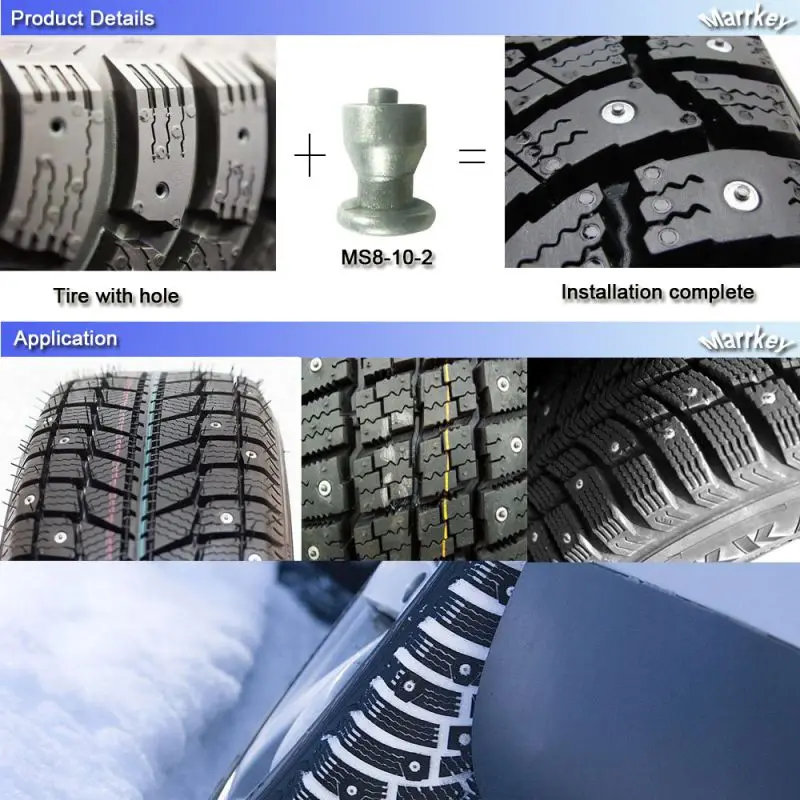
(831) 262-1-262 retail
(831) 262-1-176 for legal persons
info@linaris. ru
ru
Width:
- doesn't matter -135155165175185195205215225235245255265275285295303053131532325333537
Profile:
- not important -010.511.512.53035404550556065707580859.5
Diameter:
Availability >=:
12345678
12
Sorting:
Price ↑Price ↓
CORDIANT SNOW CROSS PW-2
225/60 R17
Show availability, apply for a loan, installment plan
Item No: 18676
Size: 225/60 R17
Type: Winter
Load index: 103
Speed index: T
Larina, 19A 4 pcs.
Kominterna, 47B 4 pcs.
Ivlieva, 22A 4 pcs.
Rayevsky, 2A 4 pcs.
Road, 66 (Pavlovo) 8 pcs.
Trunk, 26 (Kstovo) 4 pcs.
7200
CORDIANT SNOW CROSS PW-2
155/70 R13
Show availability, apply for a loan, installment plan
Item No.: 100005462
Size: 155/70 R13
Type: Winter
Load index: 75
Speed index: Q
Larina, 19A 2 pcs.
Kominterna, 47B 4 pcs.
Rayevsky, 2A 4 pcs.
Trunk, 26 (Kstovo) 8 pcs.
3220
CORDIANT SNOW CROSS 2
185/70 R14
Show availability, apply for a loan, installment plan
Item No: 27431
Size: 185/70 R14
Type: Winter
Load index: 92
Speed index: T
Road, 66 (Pavlovo) 4 pcs.
3720
CORDIANT SNOW CROSS 2
205/70 R15
Show availability, apply for a loan, installment plan
Item No.: 32682
Size: 205/70 R15
Type: Winter
Load index: 100
Speed index: T
Larina, 19A 1 pc.
Kominterna, 47B 4 pcs.
Ivlieva, 22A 4 pcs.
Rayevsky, 2A 4 pcs.
Road, 66 (Pavlovo) >12 pcs.
5430
CORDIANT SNOW CROSS PW-2
195/60 R15
Show availability, apply for a loan, installment plan
Item No: 18660
Size: 195/60 R15
Type: Winter
Load index: 92
Speed index: T
Larina, 19A 2 pcs.
Road, 66 (Pavlovo) 4 pcs.
Trunk, 26 (Kstovo) 3 pcs.
3710
HANKOOK ZOVAC HP W401
5.00/ R12
Show availability, apply for a loan, installment plan
Item No: 16908
Size: 5.00/ R12
Type: Winter
Load index: 83/81
Speed index: P
Kominterna, 47B 1 pc.
1900
KAMA 505
175/70 R13
Show availability, apply for a loan, installment plan
Nomencl.: 4792
Size: 175/70 R13
Type: Winter
Load index: 82
Speed index: T
Larina, 19A >12 pcs.
Kominterna, 47B 4 pcs.
Ivlieva, 22A 4 pcs.
Electric locomotive, 7A 4 pcs.
Rayevsky, 2A 8 pcs.
Kima, 75A 4 pcs.
Road, 66 (Pavlovo) 8 pcs.
Trunk, 26 (Kstovo) 8 pcs.
2650
KAMA NK-531
175/70 R13
Show availability, apply for a loan, installment plan
Item No.: 100022871
Size: 175/70 R13
Type: Winter
Load index: 82
Speed index: T
Larina, 19A 6 pcs.
Kominterna, 47B 4 pcs.
Ivlieva, 22A 8 pcs.
Electric locomotive, 7A 4 pcs.
Rayevsky, 2A 4 pcs.
Kima, 75A 4 pcs.
Trunk, 26 (Kstovo) 2 pcs.
2650
TUNGA NORDWAY 2 PW-5
175/70 R13
Show availability, apply for a loan, installment plan
Item No: 27437
Size: 175/70 R13
Type: Winter
Index g/n: 82
Speed index: Q
Larina, 19A >12 pcs.
Kominterna, 47B 4 pcs.
Ivlieva, 22A 12 pcs.
Electric locomotive, 7A 12 pcs.
Rayevsky, 2A 8 pcs.
Kima, 75A 2 pcs.
Road, 66 (Pavlovo) >12 pcs.
Trunk, 26 (Kstovo) 6 pcs.
2690
KAMA 503
135/80 R12
Show availability, apply for a loan, installment plan
Item No: 1747
Size: 135/80 R12
Type: Winter
Load index: 68
Speed index: Q
Larina, 19A 1 pc.
Kominterna, 47B 4 pcs.
Rayevsky, 2A 4 pcs.
Road, 66 (Pavlovo) 10 pcs.
Trunk, 26 (Kstovo) 4 pcs.
2700
KAMA 505
175/65 R14
Show availability, apply for a loan, installment plan
Item No: 8991
Size: 175/65 R14
Type: Winter
Load index: 82
Speed index: T
Larina, 19A >12 pcs.
Kominterna, 47B 8 pcs.
Ivlieva, 22A 4 pcs.
Electric locomotive, 7A 4 pcs.
Rayevsky, 2A 8 pcs.
Road, 66 (Pavlovo) >12 pcs.
Trunk, 26 (Kstovo) 4 pcs.
2760
TUNGA NORDWAY 2 PW-5
175/65 R14
Show availability, apply for a loan, installment plan
Item No: 27436
Size: 175/65 R14
Type: Winter
Load index: 82
Speed index: Q
Larina, 19A >12 pcs.
Kominterna, 47B 12 pcs.
Ivlieva, 22A >12 pcs.
Electric locomotive, 7A 8 pcs.
Rayevsky, 2A 12 pcs.
Road, 66 (Pavlovo) >12 pcs.
Trunk, 26 (Kstovo) 12 pcs.
2820
KAMA NK-531
175/65 R14
Show availability, apply for a loan, installment plan
Item No.: 100022974
Size: 175/65 R14
Type: Winter
Load index: 82
Speed index: T
Kominterna, 47B 4 pcs.
Ivlieva, 22A 8 pcs.
Electric locomotive, 7A 4 pcs.
Rayevsky, 2A 4 pcs.
2860
KAMA 505
185/60 R14
Show availability, apply for a loan, installment plan
Item No: 8990
Size: 185/60 R14
Type: Winter
Load index: 82
Speed index: T
Larina, 19A 1 pc.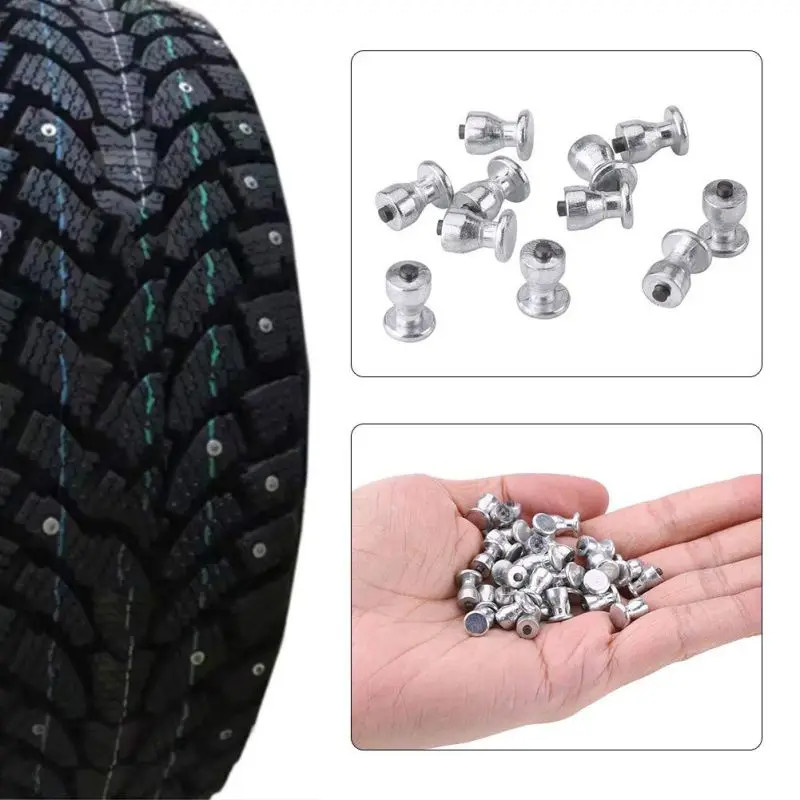
Road, 66 (Pavlovo) 4 pcs.
2950
CORDIANT SNOW CROSS PW-2
175/70 R13
Show availability, apply for a loan, installment plan
Item No: 100001597
Size: 175/70 R13
Type: Winter
Load index: 82
Speed index: T
Larina, 19A >12 pcs.
Ivlieva, 22A 2 pcs.
Rayevsky, 2A 8 pcs.
Kima, 75A 4 pcs.
Road, 66 (Pavlovo) >12 pcs.
Trunk, 26 (Kstovo) >12 pcs.
3030
TUNGA NORDWAY 2 PW-5
185/65 R14
Show availability, apply for a loan, installment plan
Item No: 27439
Size: 185/65 R14
Type: Winter
Load index: 86
Speed index: Q
Larina, 19A >12 pcs.
Kominterna, 47B 4 pcs.
Electric locomotive, 7A 4 pcs.
Rayevsky, 2A 8 pcs.
Kima, 75A 4 pcs.
Road, 66 (Pavlovo) 12 pcs.
Trunk, 26 (Kstovo) 8 pcs.
3060
TUNGA NORDWAY
185/65 R15
Show availability, apply for a loan, installment plan
Item No.: 100005554
Size: 185/65 R15
Type: Winter
Load index: 88
Speed index: Q
Road, 66 (Pavlovo) 8 pcs.
3100
TUNGA NORDWAY 2 PW-5
185/60 R14
Show availability, apply for a loan, installment plan
Item No: 27438
Size: 185/60 R14
Type: Winter
Load index: 82
Speed index: Q
Larina, 19A >12 pcs.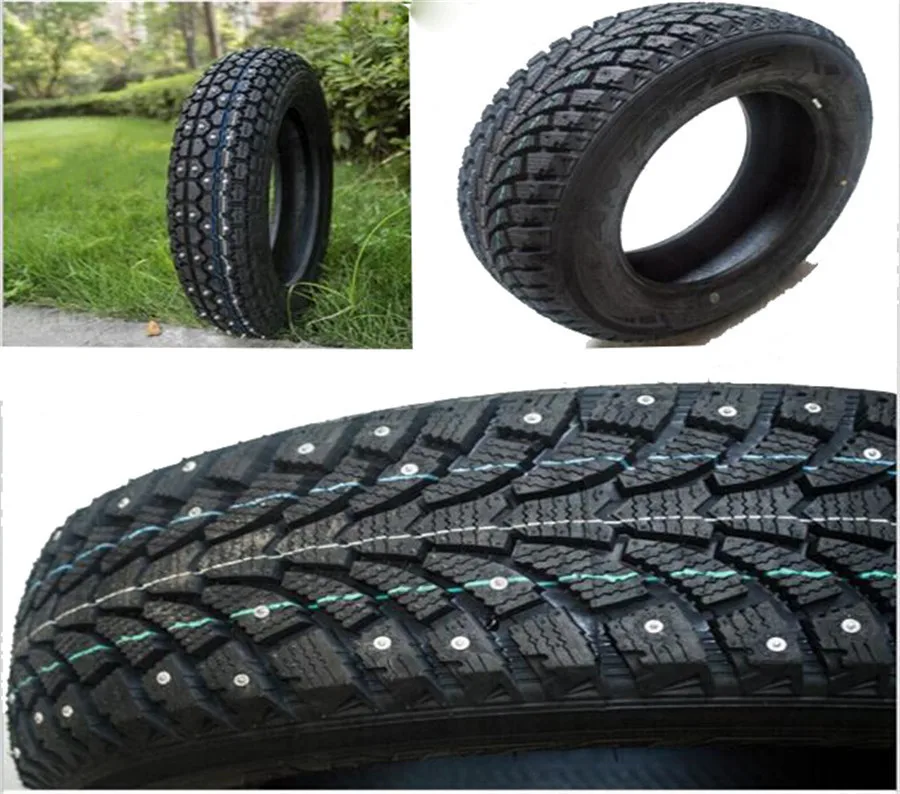
Kominterna, 47B 4 pcs.
Ivlieva, 22A 12 pcs.
Electric locomotive, 7A 8 pcs.
Rayevsky, 2A 12 pcs.
Kima, 75A 4 pcs.
Road, 66 (Pavlovo) >12 pcs.
Trunk, 26 (Kstovo) 4 pcs.
3100
CORDIANT SNOW CROSS 2
175/70 R13
Show availability, apply for a loan, installment plan
Item No: 27427
Size: 175/70 R13
Type: Winter
Load index: 82
Speed index: T
Larina, 19A >12 pcs.
Kominterna, 47B 2 pcs.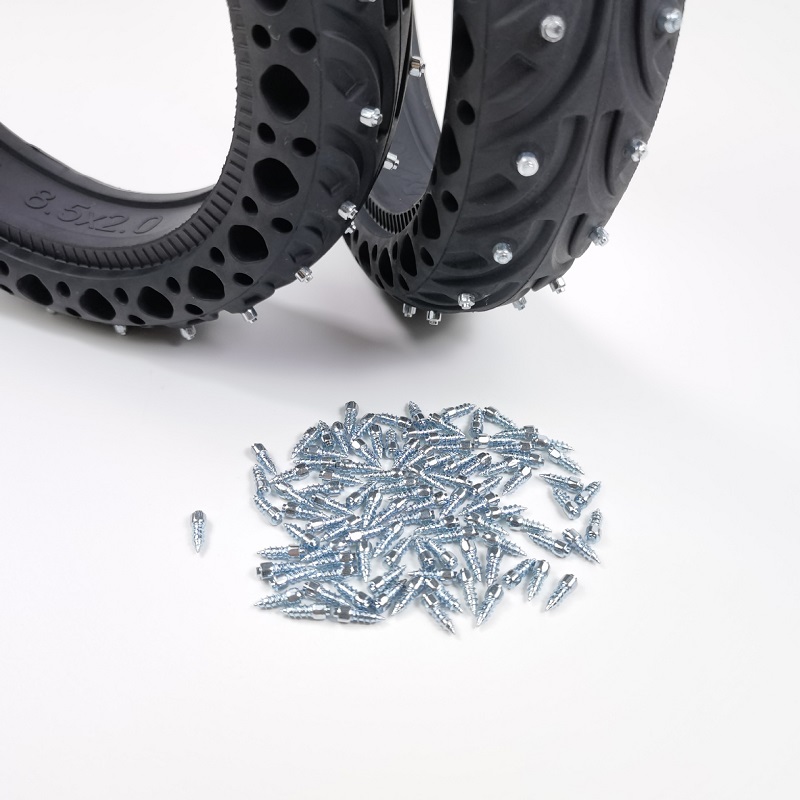
Ivlieva, 22A 4 pcs.
Electric locomotive, 7А 8 pcs.
Rayevsky, 2A 6 pcs.
Kima, 75A 8 pcs.
Road, 66 (Pavlovo) >12 pcs.
Trunk, 26 (Kstovo) 8 pcs.
3130
KAMA 505
195/65 R15
Show availability, apply for a loan, installment plan
Item No.: 8890
Size: 195/65 R15
Type: Winter
Load index: 91
Speed index: Q
Larina, 19A >12 pcs.
Kominterna, 47B 2 pcs.
Ivlieva, 22A 4 pcs.
Electric locomotive, 7A 4 pcs.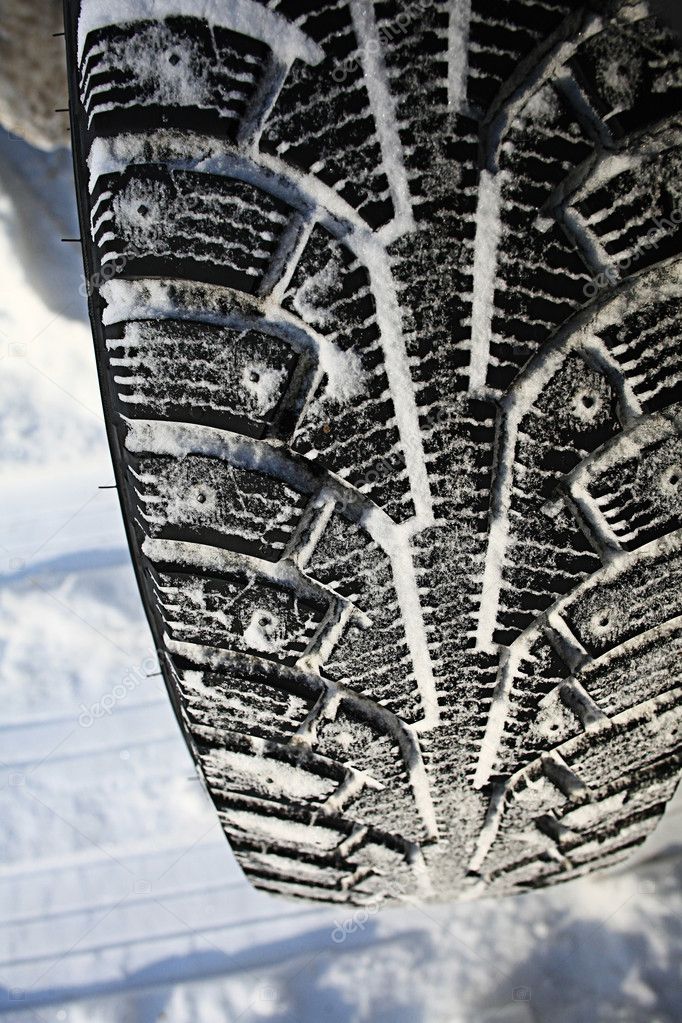
Rayevsky, 2A 8 pcs.
Kima, 75A 4 pcs.
Trunk, 26 (Kstovo) 8 pcs.
3160
KAMA EURO-519
175/70 R13
Show availability, apply for a loan, installment plan
Item No.: 100014278
Size: 175/70 R13
Type: Winter
Load index: 82
Speed index: T
Trunk, 26 (Kstovo) 8 pcs.
3160
CORDIANT SNOW CROSS
175/65 R14
Show availability, apply for a loan, installment plan
Item No.: 28644
Size: 175/65 R14
Type: Winter
Load index: 82
Speed index: T
Larina, 19A >12 pcs.
Kominterna, 47B 8 pcs.
3180
TUNGA NORDWAY
185/70 R14
Show availability, apply for a loan, installment plan
Item No: 100005553
Size: 185/70 R14
Type: Winter
Load index: 88
Speed index: Q
Larina, 19A >12 pcs.
Kominterna, 47B 8 pcs.
Ivlieva, 22A 7 pcs.
Electric locomotive, 7A 4 pcs.
Rayevsky, 2A 8 pcs.
Kima, 75A 4 pcs.
Road, 66 (Pavlovo) >12 pcs.
Trunk, 26 (Kstovo) 4 pcs.
3200
KAMA NK-531
185/65 R14
Show availability, apply for a loan, installment plan
Item No: 100024292
Size: 185/65 R14
Type: Winter
Load index: 86
Speed index: T
Larina, 19A 6 pcs.
3200
KAMA NK-531
185/70 R14
Show availability, apply for a loan, installment plan
Item No.: 100023853
Size: 185/70 R14
Type: Winter
Load index: 88
Speed index: T
Larina, 19A >12 pcs.
Kominterna, 47B 4 pcs.
Electric locomotive, 7A 4 pcs.
Kima, 75A 4 pcs.
Trunk, 26 (Kstovo) 8 pcs.
3280
CORDIANT SNOW CROSS 2
175/65 R14
Show availability, apply for a loan, installment plan
Item No: 27426
Size: 175/65 R14
Type: Winter
Load index: 86
Speed index: T
Larina, 19A 10 pcs.
Kominterna, 47B 4 pcs.
3280
TUNGA NORDWAY 2 PW-5
195/65 R15
Show availability, apply for a loan, installment plan
Item No.: 27440
Size: 195/65 R15
Type: Winter
Load index: 91
Speed index: Q
Larina, 19A >12 pcs.
Kominterna, 47B 8 pcs.
Ivlieva, 22A 8 pcs.
Electric locomotive, 7A 10 pcs.
Rayevsky, 2A 8 pcs.
Kima, 75A 4 pcs.
Road, 66 (Pavlovo) >12 pcs.
Trunk, 26 (Kstovo) 8 pcs.
3360
CORDIANT WINTER_DRIVE_2
175/70 R13
Show availability, apply for a loan, installment plan
Item No: 100015870
Size: 175/70 R13
Type: Winter
Load index: 82
Speed index: T
Larina, 19A 8 pcs.
Trunk, 26 (Kstovo) 4 pcs.
3390
CORDIANT SNOW CROSS PW-2
185/65 R14
Show availability, apply for a loan, installment plan
Item No: 100001598
Size: 185/65 R14
Type: Winter
Index g/n: 86
Speed index: T
Larina, 19A >12 pcs.
Kominterna, 47B 8 pcs.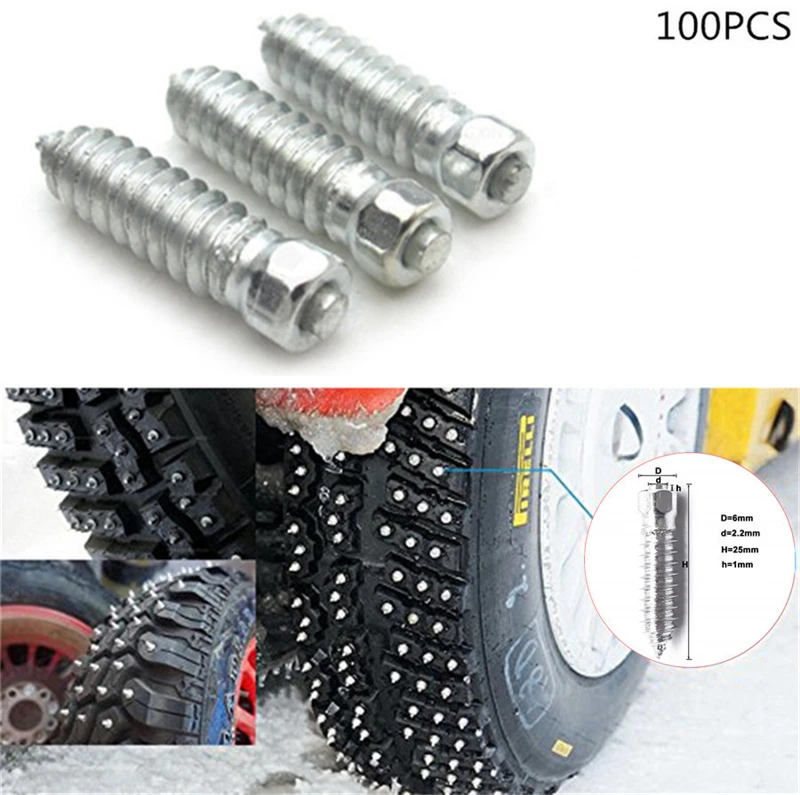
Ivlieva, 22A 8 pcs.
Electric locomotive, 7A 8 pcs.
Rayevsky, 2A 8 pcs.
Kima, 75A 4 pcs.
Road, 66 (Pavlovo) 10 pcs.
Trunk, 26 (Kstovo) 4 pcs.
3450
CORDIANT SNOW CROSS 2
175/70 R14
Show availability, apply for a loan, installment plan
Item No: 27428
Size: 175/70 R14
Type: Winter
Load index: 88
Speed index: T
Larina, 19A >12 pcs.
Kominterna, 47B 4 pcs.
Electric locomotive, 7A 4 pcs.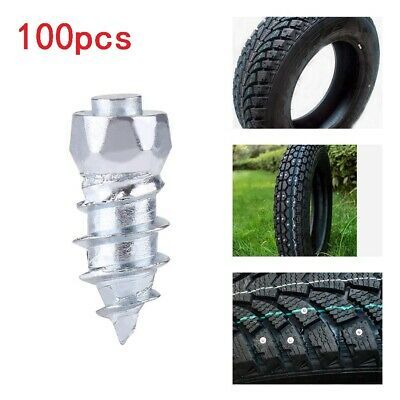
Rayevsky, 2A 4 pcs.
Road, 66 (Pavlovo) 4 pcs.
Trunk, 26 (Kstovo) 4 pcs.
3450
LANVIGATOR ICE-SPIDER
175/65 R14
Show availability, apply for a loan, installment plan
Item No.: 100022641
Size: 175/65 R14
Type: Winter
Load index: 86
Speed index: T XL
Larina, 19A >12 pcs.
Kominterna, 47B 8 pcs.
Electric locomotive, 7A 8 pcs.
Rayevsky, 2A 8 pcs.
Trunk, 26 (Kstovo) 8 pcs.
3450
CORDIANT POLAR SL PW-404
185/65 R14
Show availability, apply for a loan, installment plan
Item No: 16514
Size: 185/65 R14
Type: Winter
Load index: 86
Speed index: Q
Larina, 19A 1 pc.
Electric locomotive, 7A 2 pcs.
3490
CORDIANT SNOW CROSS PW-2
185/60 R14
Show availability, apply for a loan, installment plan
Item No.: 100005576
Size: 185/60 R14
Type: Winter
Index g/n: 82
Speed index: T
Larina, 19A 3 pcs.
Kominterna, 47B 8 pcs.
Ivlieva, 22A 4 pcs.
Electric locomotive, 7A 8 pcs.
Rayevsky, 2A 4 pcs.
Kima, 75A 4 pcs.
Road, 66 (Pavlovo) 8 pcs.
Trunk, 26 (Kstovo) 4 pcs.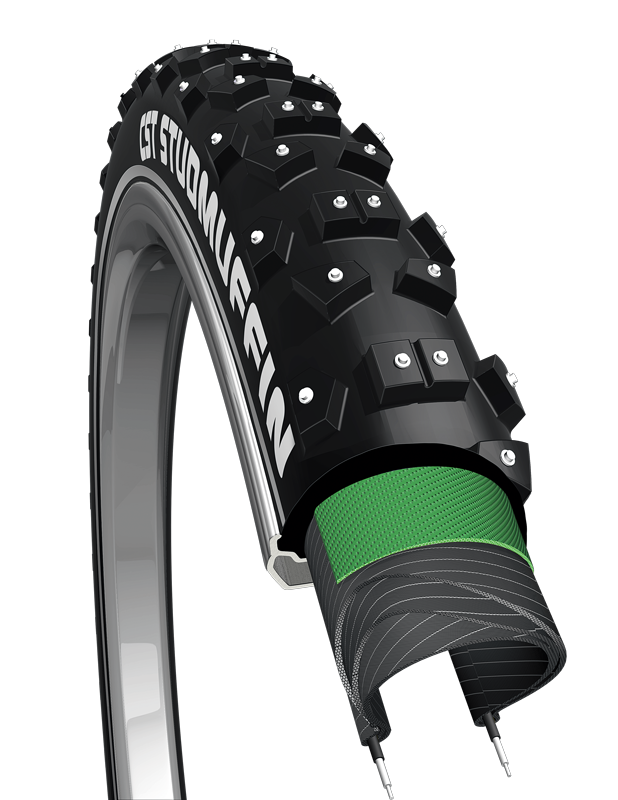
3500
NKShZ Viatti Brina Nordico V-522
185/65 R15
Show availability, apply for a loan, installment plan
Item No: 100016859
Size: 185/65 R15
Type: Winter
Load index: 88
Speed index: T
Larina, 19A >12 pcs.
Kominterna, 47B 4 pcs.
Ivlieva, 22A 8 pcs.
Electric locomotive, 7A 4 pcs.
Rayevsky, 2A 4 pcs.
Kima, 75A 4 pcs.
Trunk, 26 (Kstovo) 4 pcs.
3550
CORDIANT SNOW CROSS
185/65 R15
Show availability, apply for a loan, installment plan
Item No: 27734
Size: 185/65 R15
Type: Winter
Load index: 92
Speed index: T
Larina, 19A >12 pcs.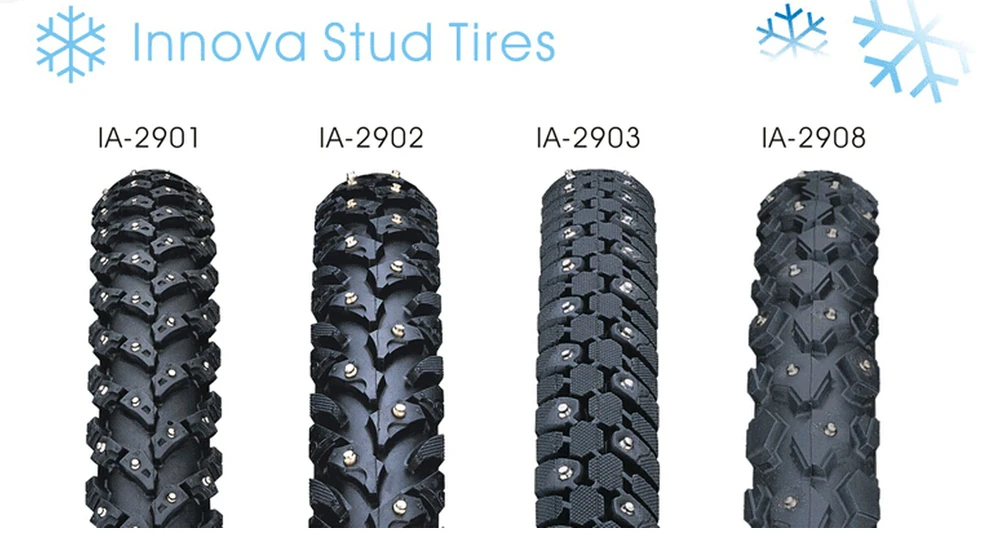
Kominterna, 47B 8 pcs.
Ivlieva, 22A 12 pcs.
Electric locomotive, 7A 12 pcs.
Rayevsky, 2A 4 pcs.
Kima, 75A 4 pcs.
Road, 66 (Pavlovo) >12 pcs.
Trunk, 26 (Kstovo) 9 pcs.
3560
04/01/2022 - 12/31/2023
09/01/2022 - 01/31/2023
Is your car ready for winter?
01.10.2022 - 10.2022
Shinomontate
01.10.2021 - 31.12.2022
01.03.2022 - 31.12.2023
Drive in the cold season makes special requirements for tires. To buy winter tires with delivery in Nizhny Novgorod, please contact the official supplier - Linaris LLC.
Wheel products of different brands and all price categories are on sale.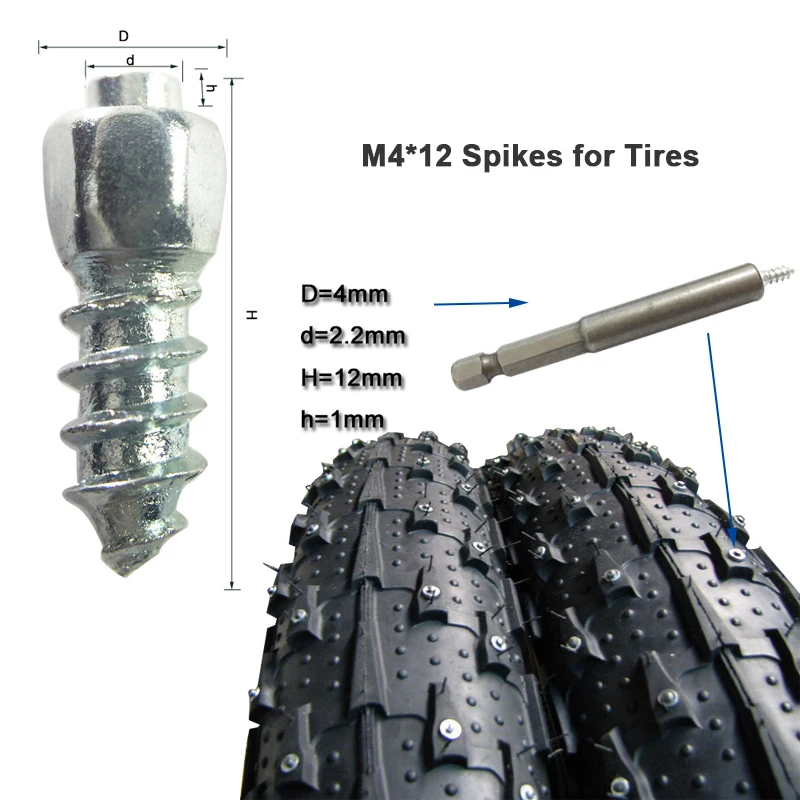 You can choose a set of winter tires that is optimal for a particular car, driving conditions and suitable for the price.
You can choose a set of winter tires that is optimal for a particular car, driving conditions and suitable for the price.
All tires are certified, there is documentary evidence of driving and technical and functional qualities, as well as resource potential. Each set of winter tires comes with an official warranty. The range is constantly updated, there are tires for all types of vehicles.
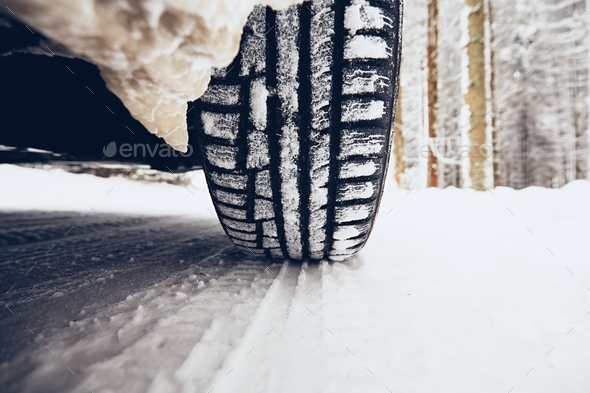 In the second case, winter tires have a special porous structure and, due to this, seem to “stick” to the road surface, which prevents slipping.
In the second case, winter tires have a special porous structure and, due to this, seem to “stick” to the road surface, which prevents slipping. A special variety are the standard tires that can be studded. These can be ordinary budget wheels, the processing of each of them costs an average of 15-20 dollars.
There is a convenient form on the Linaris LLC website that allows you to select tires according to the specified parameters. Specify the appropriate standard sizes in the "Width", "Profile" and "Diameter" fields and click "Apply" - a list of wheel products that meet the specified criteria will be displayed.
You can filter the list by season (in this case, for winter tires, the presence / absence of studs is indicated) and manufacturer (brand).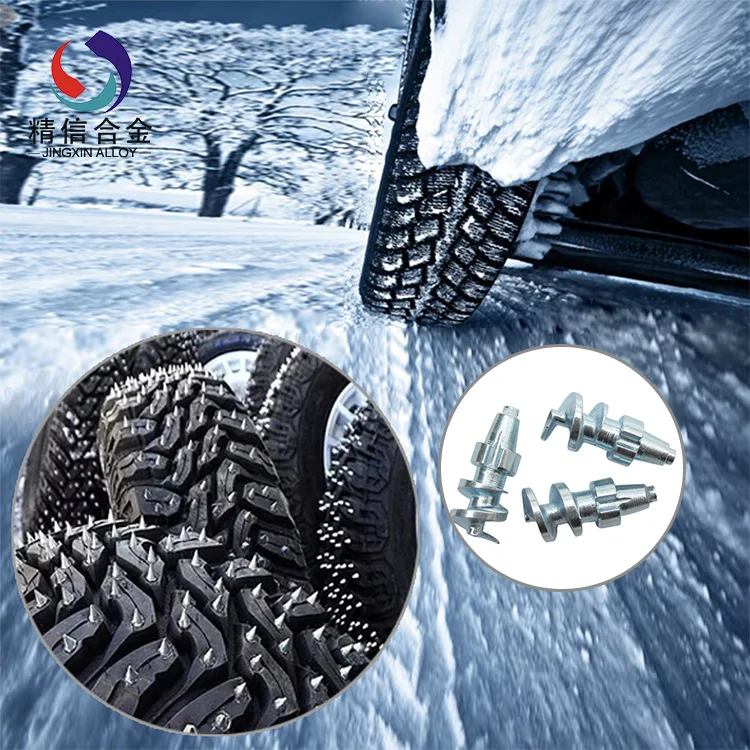 The ability to sort the list in ascending/descending cost has been implemented, while you yourself set the price range that matches your budget. For each type of wheel products, a detailed description is given with the main characteristics and a visual illustration.
The ability to sort the list in ascending/descending cost has been implemented, while you yourself set the price range that matches your budget. For each type of wheel products, a detailed description is given with the main characteristics and a visual illustration.
To buy winter tires and order delivery in Nizhny Novgorod, call: 8 (831) 262-12-62 — or use the web form.
https://ria.ru/20180118/1512786049.html
A slippery question: what is better for winter - studded or non-studded tires?
A slippery question: what is better for winter - studded or non-studded tires? - RIA Novosti, 03/03/2020
A slippery question: what is better for winter - studded or non-studded tires?
Winter in Russia always comes unexpectedly: in some regions for a couple of months, in others for half a year or even more. This season in the central regions of the country RIA Novosti, 18. 01.2018
01.2018
2018-01-18T08:00
2018-01-18T08:00
2020-03-03@T09:05
/[html name='og:title']/@content
/html/head/meta[@name='og:description']/@content
https://cdnn21.img.ria.ru/images/sharing/ article/1512786049.jpg?15127838331583215528
Russia
RIA Novosti
1
5
4.7
9000
7 495 645-6601
FSUE MIA Today "
https: // XN --c1acbl2abdlkab1og.xn--p1ai/ Awards/
2018
RIA Novosti
1
5
4.7
96 9000 9000 9000
Internet-grian.ru
7 495 645-6601 9000 9000 9000 9000 9000 Russia Today
1
5
4.7
9000
7 495 645-6601
FSUE MIA "Russia Today"
https: //xn--c1acbl2abdlkab1og.xn- P1AI/Awards/
RIA Novosti
1
5
4.7
9000
Internet-grian.ru
7 495 645-6601
FSUI MIA Russia Today
https: // xn--c1acbl2abdlkab1og.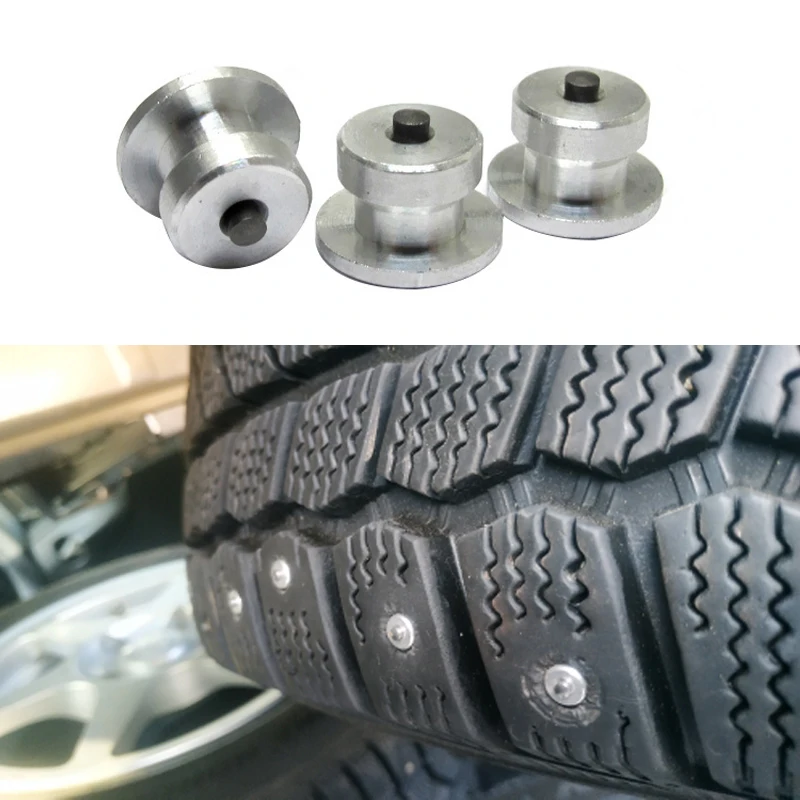 xn--p1ai/awards/
xn--p1ai/awards/
auto, Russia
Auto, Russia
MOSCOW, January 18 - RIA Novosti, Sergey Belousov. Winter in Russia always comes unexpectedly: in some regions for a couple of months, in others for six months or even more. This season, in the central regions of the country, almost no snow was seen until the New Year. Each motorist has already decided for himself which tires will best ensure his safety: studded or non-studded. RIA Novosti, together with tire industry experts, found out what is preferable in certain situations and how to behave on Russian roads when driving a car with one or another type of winter tires.
December 24, 2017, 08:00
Total swindle: why pneumatic tires will end up in a landfill Why all pneumatic tires will soon end up in a landfill
opted for studded tires. In October last year, only about 15 percent of service users were interested in Velcro (as non-studded tires are commonly called), in November, demand grew by only a couple of percent.
Studded are most popular in the Saratov and Smolensk regions, as well as in the Republic of Tatarstan (from 83 to 88 percent). Velcro attracts car owners from the Stavropol, Khabarovsk, Primorsky and Krasnodar Territories, as well as the Kaliningrad Region: there the share of studded tires did not exceed 14-30 percent of the total number of requests.
Everyone knows that studded tires are indispensable in small towns: snow is rarely or poorly removed there, densely packed snow crust is often formed, as well as ice. Numerous independent tire tests show that in these conditions the use of studs is justified, the braking distance of cars "shod" in them becomes significantly shorter.
Michael Zickfeld, Continental's Technical Customer Service Specialist, also recommends studded tires in the Russian metropolitan areas of Moscow and St. Petersburg. According to the expert, in both capitals, snow often melts on roads treated with reagents, and freezes again in the morning, turning into ice. If we add snowfall to this, then it is difficult to imagine a more dangerous situation: the advantage in this situation is on the side of cars with studded tires.
If we add snowfall to this, then it is difficult to imagine a more dangerous situation: the advantage in this situation is on the side of cars with studded tires.
“In 2004, the use of studded tires was banned in Norway for one season,” says Michael Zikfeld. “The number of accidents increased several times, especially in small towns, which occurred mainly at intersections with traffic lights. removed."
A Pirelli technician reminds you that studded tires are designed mainly for northern countries and are prohibited in most European countries. In Russia, such tires will ensure safety in most cities.
December 28, 2017, 08:00
Shattered to smithereens? Ten myths about winter driving
Studless tires are sometimes referred to as friction tires, from the Latin word frictio - friction. Pirelli specialists say that this concept is philistine. The principle of operation of all tires is friction, friction with the road surface. Modern companies offer a wide selection of rubber in their product lines, but you need to be able to distinguish between them. For example, there are so-called mild European winter tires designed for moderate winter temperatures and handling predominantly snow or wet surfaces. Others, just friction ones, are designed for harsh winters. There are also tires for southern regions (mainly European). They are usually called "all seasons", and they are not adapted for Russian winters, do not provide the proper level of safety, although in the summer they can be used, for example, for off-road driving.
Modern companies offer a wide selection of rubber in their product lines, but you need to be able to distinguish between them. For example, there are so-called mild European winter tires designed for moderate winter temperatures and handling predominantly snow or wet surfaces. Others, just friction ones, are designed for harsh winters. There are also tires for southern regions (mainly European). They are usually called "all seasons", and they are not adapted for Russian winters, do not provide the proper level of safety, although in the summer they can be used, for example, for off-road driving.
© Photo: courtesy of Continental Winter road
© Photo: courtesy of Continental
season in Russian latitudes. "One of the valuable benefits of non-studded tires is acoustic comfort," Pirelli notes.
December 26, 2017, 08:00
Try to steal: five simple life hacks that will keep your car from being stolen
Michael Zickfeld from Continental explains how to distinguish different types of non-studded tires from each other: the sidewall of a tire for harsh winters is at a right angle, while for a European one it is rounded. Euro winter tires are designed for operation from plus seven to minus 15 degrees Celsius. Most often they are used on dry asphalt or on wet snow. "Nordic" tires are designed for much lower temperatures: up to 50-60 degrees below zero. There is also a difference in the composition of rubber: tires are harder for mild winters, and softer for severe ones. By the way, you can’t even store European tires at minus 50, let alone drive them.
Euro winter tires are designed for operation from plus seven to minus 15 degrees Celsius. Most often they are used on dry asphalt or on wet snow. "Nordic" tires are designed for much lower temperatures: up to 50-60 degrees below zero. There is also a difference in the composition of rubber: tires are harder for mild winters, and softer for severe ones. By the way, you can’t even store European tires at minus 50, let alone drive them.
17 December 2017, 08:00
How steel was broken: deadly cars sold in RussiaTop deadly cars sold in Russia
there is no ice on the road. Tests also show that Velcro is much more stable on slush and loses traction at higher speeds than on a car with studded tires. As Michael Zikfeld explains, the lamellas of the "frictions" take the snow into themselves and make it grapple with the snow lying on the road. In addition, these grooves provide better water drainage. Even on a rolled snow surface or ice cover at negative temperatures down to minus 10 degrees Celsius, a water film is formed about a millimeter thick. Friction tires in this case drain water and provide a good grip. The liquid film disappears only at very low temperatures (about minus 30 degrees), and then non-studded tires lose their effectiveness.
Friction tires in this case drain water and provide a good grip. The liquid film disappears only at very low temperatures (about minus 30 degrees), and then non-studded tires lose their effectiveness.
Surprisingly, the more cars with studded tires in the city, the safer the operation of cars with non-studded tires. On an icy road, the spikes loosen the surface and thus create more grip for the Velcro. That is why, according to a Continental expert, friction tires can be used even in regions with severe winters. Of course, large cities are not alike, and winter somewhere in Siberia leaves almost no chance for non-studded tires.
One thing not to consider when choosing tires is the type of vehicle drive. “All drives brake equally, and what’s more, all-wheel drive cars weigh a little more than their 2-wheel drive counterparts, so quality tires that provide good deceleration are even more important to them,” says Zikfeld.
Braking is also affected by the tire tread width: if it is possible to install larger diameter discs on the car, then there is no doubt that with the same tires, the larger wheels will provide deceleration a little better.
For the studs and tread of any tire to last longer, it is important to break it in. The Continental expert advises the first 500-800 kilometers to drive smoothly at a speed of no more than 100 kilometers per hour. So tires wear out less and last longer. Otherwise, the spikes will take the wrong position (bend at the wrong angle) and fly out faster. The same with the tread - without a break-in, it wears out much faster and the tire life can be reduced by two or more times.
"We monitor the use of tires in taxis - they drive there in a year as much as an ordinary driver in three or four years," says Michael Zickfeld. "So, in some cases, a tire becomes unusable after 25 thousand kilometers, and in others, with the same distance traveled, all the spikes on it are intact.
Pirelli is of the same opinion and adds that the service life also depends on the correct pressure, adjusted camber / toe-in, temperature in which the rubber is used, road surface and off-season storage conditions. 9December 10, 2017 "The loss of 10 percent of the spikes will not affect the behavior of the car," Continental notes. "Claws" usually fall out after 20 thousand kilometers, but if the driver drives the car aggressively, constantly starts with slippage, brakes sharply on dry pavement, this will happen much faster.
9December 10, 2017 "The loss of 10 percent of the spikes will not affect the behavior of the car," Continental notes. "Claws" usually fall out after 20 thousand kilometers, but if the driver drives the car aggressively, constantly starts with slippage, brakes sharply on dry pavement, this will happen much faster.
In a relaxed driving mode, the studs fall out as the tread wears out, but even after losing half the tire will still be able to provide an acceptable level of braking. Replacement will be required when the tread depth becomes less than four millimeters: the spikes will fall out like scurvy teeth.
For a friction tire, everything is much simpler: you only need to look at the tread depth. Many car manufacturers have indicators: numbers or images of snowflakes are gradually erased, suggesting when it is time to change tires. According to Russian laws, it is forbidden to use winter tires with a tread depth of less than four millimeters.
If one of the wheels fell into a pit, was damaged in an accident and the winter tire became unusable, it must be replaced carefully.